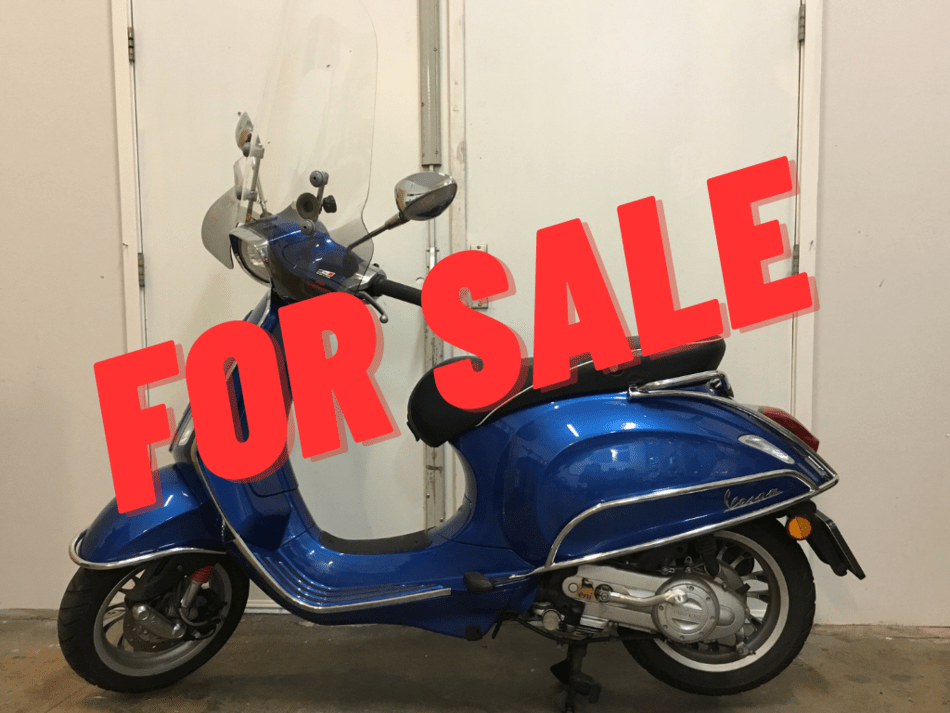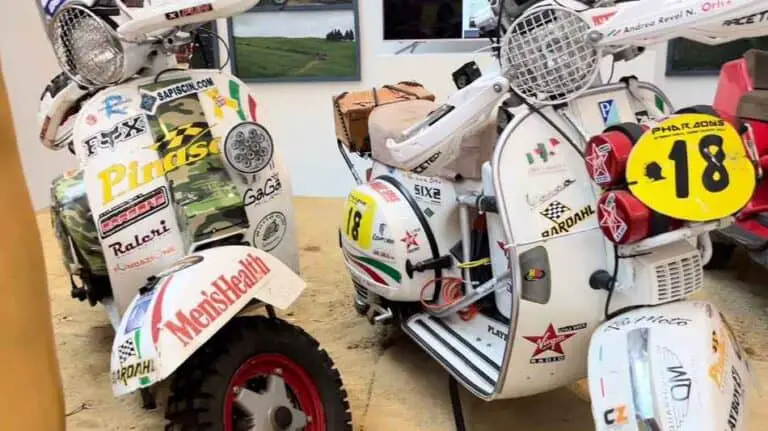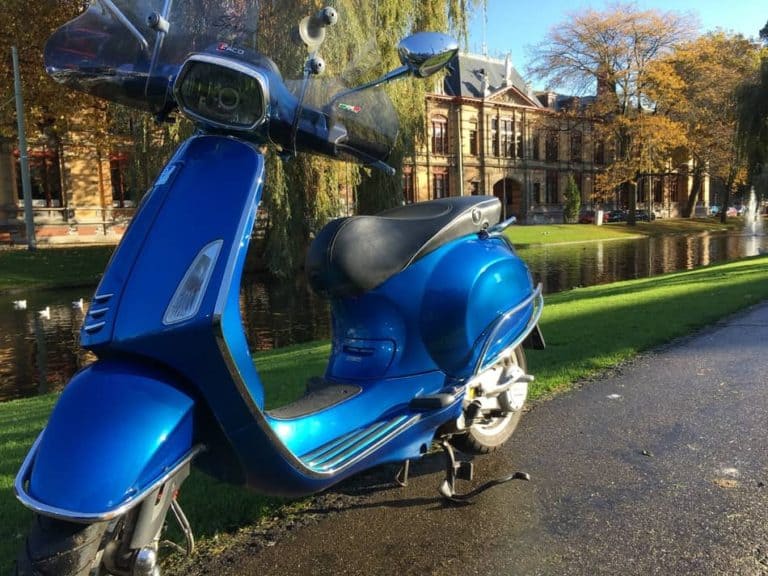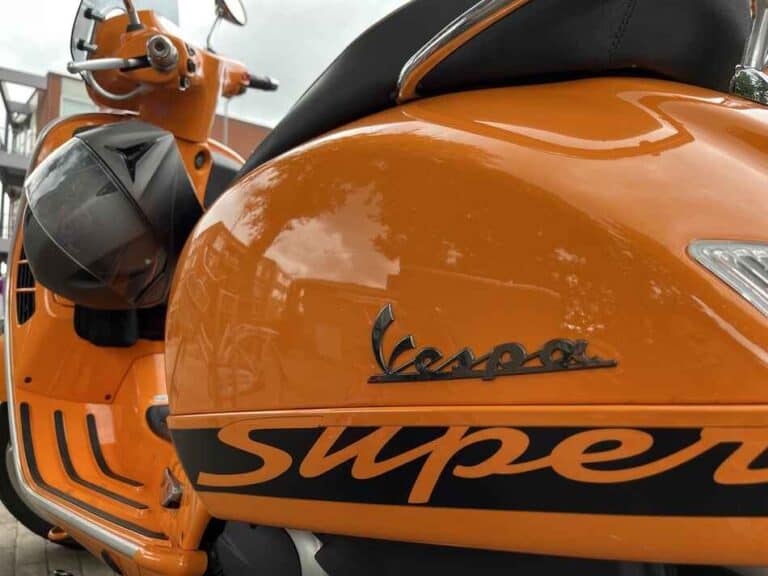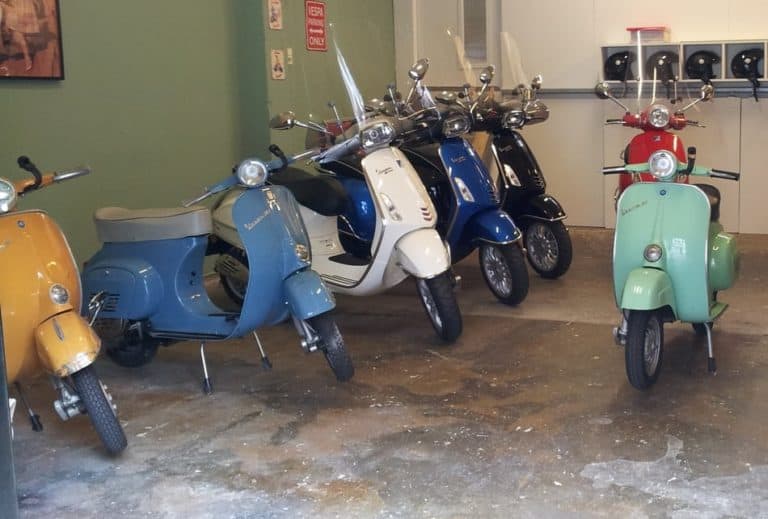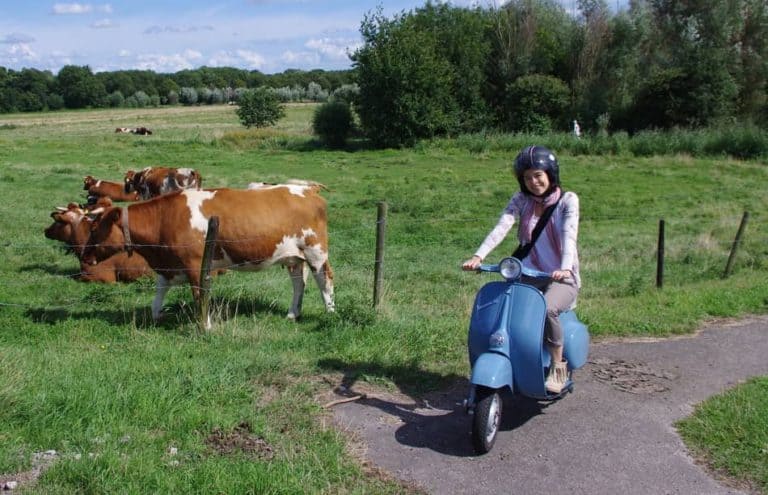The Guide To Buying A Used Vespa. Based on our own experience.
When you want to buy a Vespa then chances are you are considering buying a used one. We started our Vespa rental company with 6 used Vespas: 3 classic and 3 modern scooters. Soon enough we discovered that most of the used Vespas we bought were not what we had expected. We made a lot of mistakes when buying a used Vespa. This resulted in Vespas breaking down and additional maintenance costs.
From the 3 modern used Vespas we bought, 2 caused a lot of headaches. As for the classic scooters, one was a pain and one wasn’t exactly what the previous owner described.
So only 2 Vespas out of 6 were reliable. However, we learned a lot from the additional maintenance and costs of the other 4 Vespas and now we know what to look out for when buying a used Vespa.
Vespa is known as a quality scooter that almost seems to last forever. So it comes as no surprise that used Vespas are very popular. Besides its reliability, a used Vespa saves you loads of money. Because let’s face it, a new one is so expensive. That said, Vespas are known to keep their value so don’t be too shocked to see that a used Vespa can still cost thousands of dollars. Already considering buying a new one? Then you might want to check the article about why it is worth buying a new Vespa.
Based on our experience with buying a used Vespa, we have listed some step-by-step tips during the process of purchasing a used Vespa yourself.
1. Decide which used Vespa you want to buy
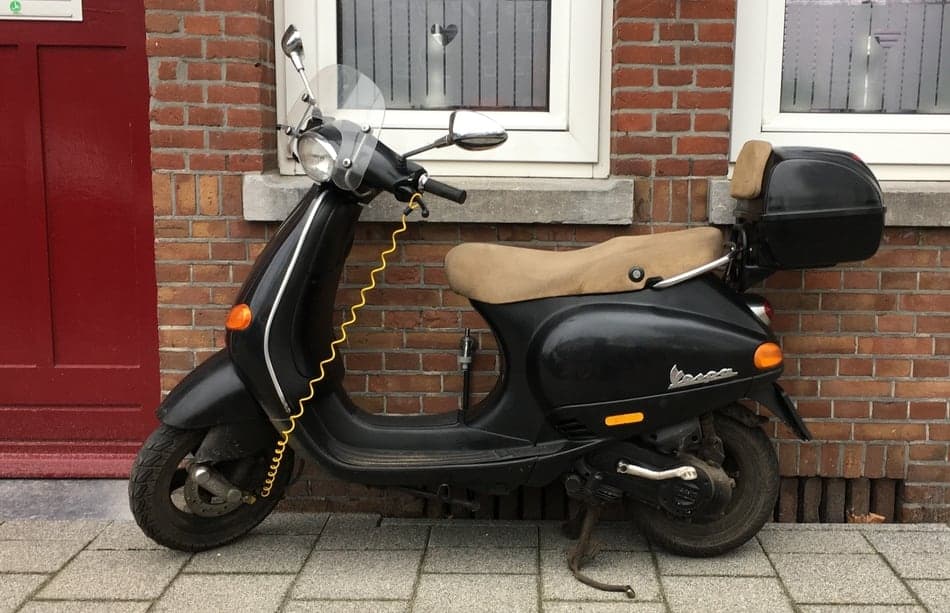
Classic Vespas which are more than 30 years old still drive as if they just came out of the factory in Italy. Luckily the modern Vespas are just as good as the classics. Their monocoque frame is made from metal making it sturdy and durable. The first modern Vespa model, the Vespa ET is still zooming around just like the newer models such as the GTS, LX, Primavera, and Sprint.
There are all types of Vespa models that you can choose from. But first of all, try to answer the following questions to determine the Vespa model that suits you best.
- Do I want a classic or modern Vespa?
- Do I want a small frame or large frame Vespa?
- Do I have the correct licence to drive the Vespa model I want?
- How fast does my Vespa need to go?
- Where will I be driving my Vespa?
If you still don’t know which Vespa suits you best, have a look at the article “Which Vespa fits your needs?” which explains all the differences in the points mentioned above.
2. Know how a proper Vespa drives

If you have never owned a Vespa you should try to drive one first before looking for a used or second-hand Vespa. It might sound silly, but believe me, once you know how a proper Vespa drives and sounds then you know what to look out for when going for a used one.
When we bought our first classic Vespa we had never driven one or had any in-depth knowledge about the scooter. We just fell in love with the looks. We found this classic dove blue V50 from 1967 online and the private owner lived about a 30 minutes drive from us. Luckily he was very enthusiastic about the Vespa and even found it difficult to sell. He wanted to keep it but he hardly drove it anymore since his son was born.
Anyway, we spent the whole afternoon at his house where he showed pictures of the restoration and explained everything in detail about the Vespa. By then we were sold, and we hadn’t even driven it! Eventually, we did a test drive. Luckily the owner lived in a quiet area so we could practice a bit.
We paid and took the Vespa straight home with us. The Vespa was fine and was a good buy in the end. We had minor problems but in the case of ‘knowing how a proper Vespa drives’ this V50 never drove as stable and comfortable as the other Vespas, we bought afterwards.
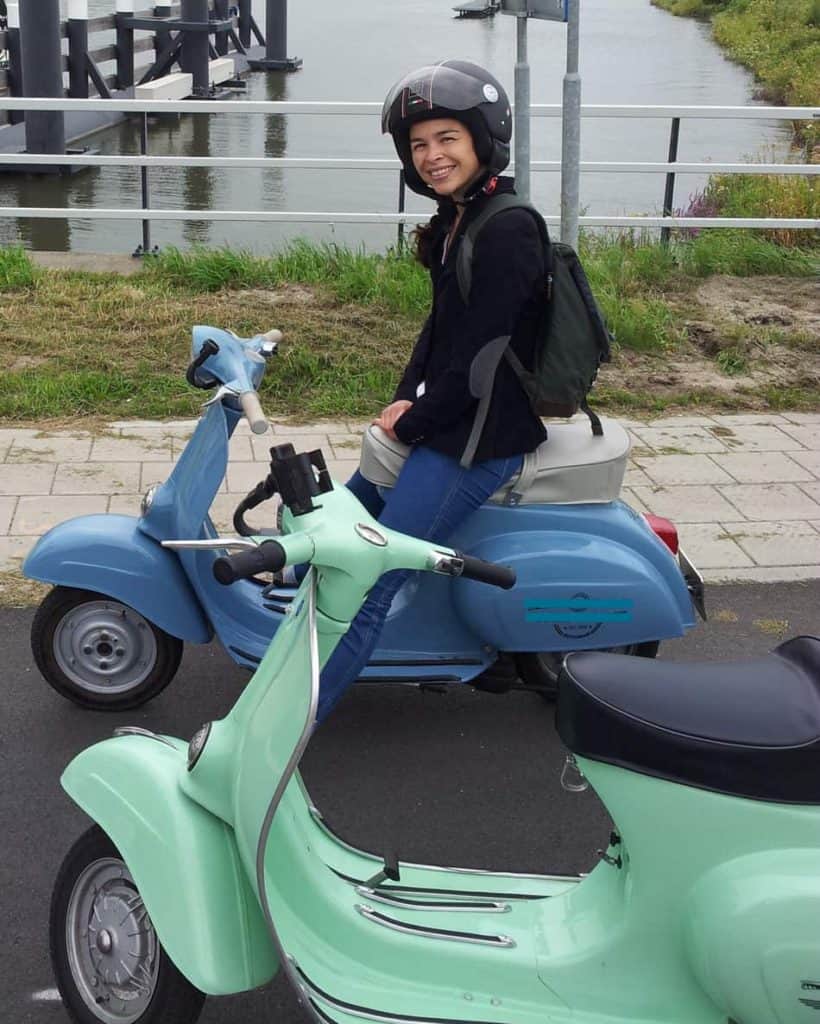
A classic Vespa is unique and they don’t drive all the same. But with prior experience, you can feel the differences. Differences can be due to the quality of the restoration, maintenance, how the Vespa was kept, and engine parts. Something you need to be aware of, especially when dealing with the price. So my advice is to try several classic Vespas when possible.
As for modern Vespas, if you are familiar with them you can tell straight away if something is wrong. So even with the modern ones, it is wise to drive a Vespa first before purchasing a used one yourself. The sound and the way it drives can tell a lot about its condition.
Never driven a Vespa before? In the following article, we describe step by step how this is done.
If you don’t know anybody who owns a Vespa then you can always look for a rental company, like the one that we had. We rented Vespas out for a whole day. This will give you enough opportunity to know what it feels like to drive a proper Vespa.
3. Do some research on the prices of used Vespas
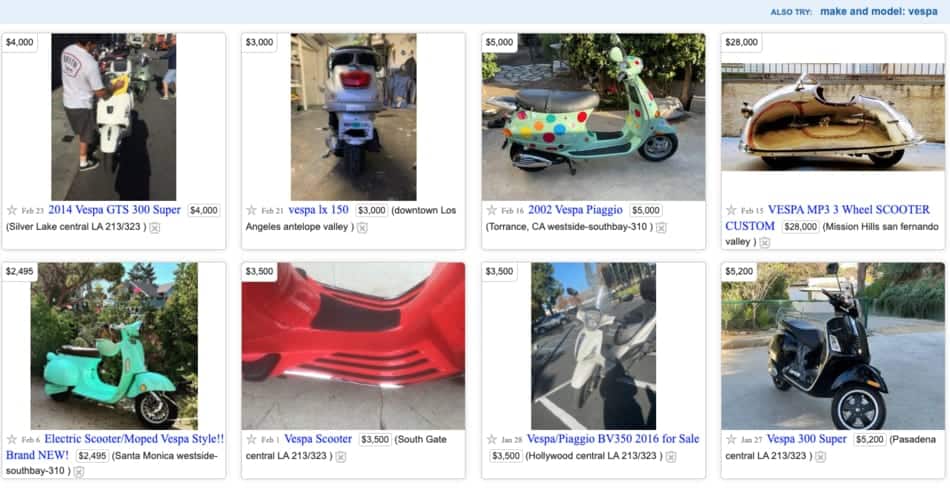
You can find prices of Vespas everywhere online, especially the new ones. Unfortunately, in the case of a used Vespa, the price isn’t half of what it was when the first owner bought it.
Used Vespas can still be quite expensive, which is ok as long as it is still in good condition and has a maintenance history.
“An 8-year-old Vespa with proof of scheduled maintenance and an unmodified engine is worth much more than a 2-year old Vespa that doesn’t have both. “
Look around to see how much used Vespas costs in your country. Check dealers that sell used Vespas but also browse the internet to see what private sellers are asking. Classified advertisement websites such as Craiglist, are ideal to find used Vespas and to get an idea of the prices.
When browsing these websites don’t be fooled by the title. Some claim it is a Vespa but if you look closer it isn’t. It might be a Piaggio Scooter or a Moped Vespa Style. So before you hit these websites know what you are looking for.
We bought all our modern Vespas and one classic Vespa through a website similar to Craiglist. We also bought them in the winter as the prices often go up in spring and summer.
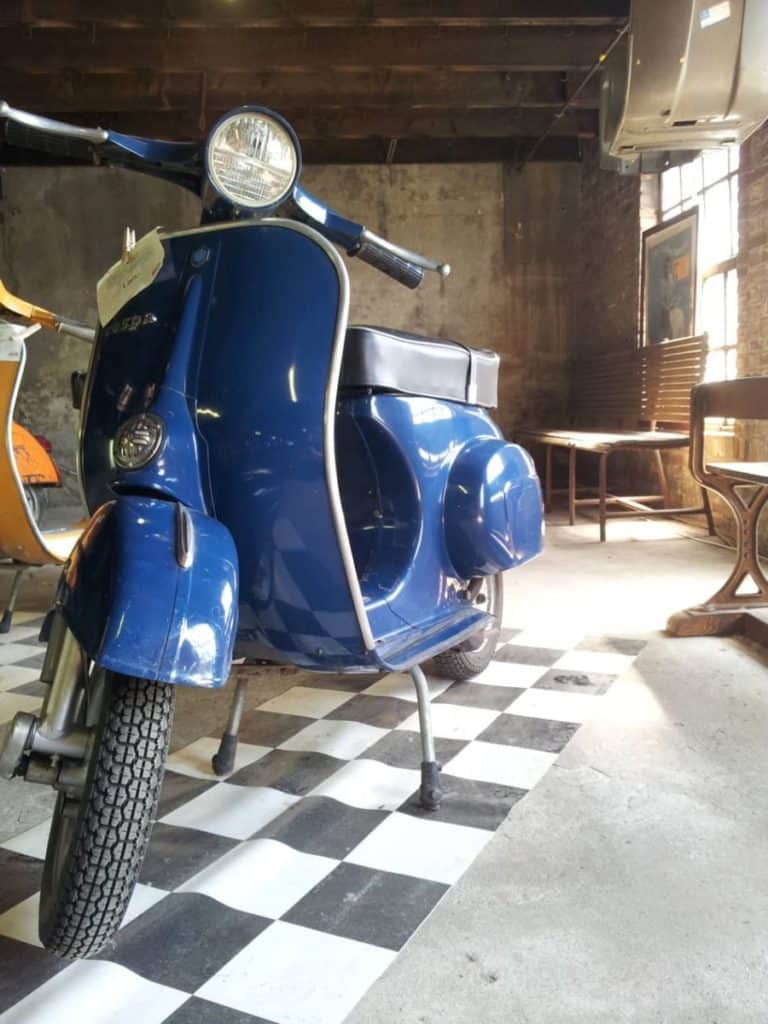
The other two classic Vespas were bought at a garage that focused on classic Vespas only. Walking through this Vespa shop is like walking through a candy store. When we visited we always wished we could buy more than just the two we got. Anyway, we paid 1000 euros extra for these two classic Vespas compared to the one we found online.
Luckily both of them were very reliable. Until today one has never let us down. The other was a good ride too, however, the engine was modified so it drove way too fast. Before buying the Vespa shop said it would change the cylinder so it would drive within the required speed limits, but still, the Vespa drove faster than the required 30mph (50km/h).
Prices also go slightly up if the owner has added accessories to the Vespas. A windshield, crash bars, and a rear rack are common accessories on a Vespa. Also, check if a decent lock is included in the price.
4. Decide how much you want to pay for a used Vespa
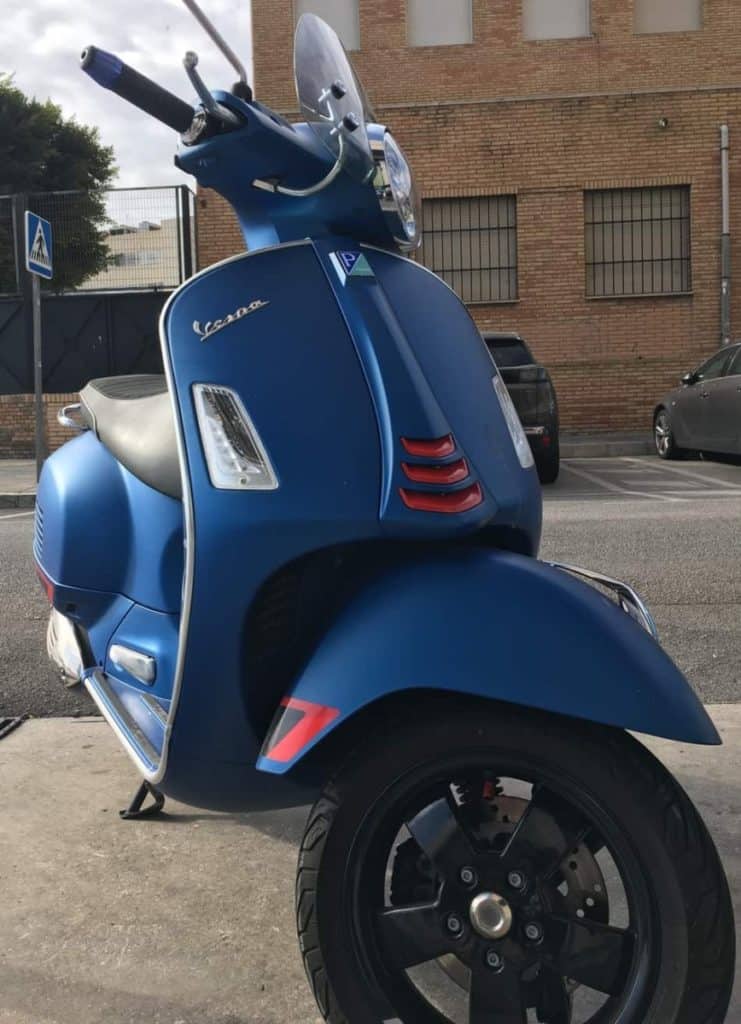
You need to set a maximum on how much you want to pay for your used Vespa. If you have done your research you will see that prices can vary a lot. A Vespa from a dealer is always more expensive than a private owner but there is more to a price tag.
Cheap Vespas are not necessarily bad. There might be a reason why it is cheap but if you can fix it yourself then you have a good deal. Beware that if you bring it to a certified Vespa workshop the purchase of the scooter will be more than expected, but in some cases, you might have gotten yourself a good buy.
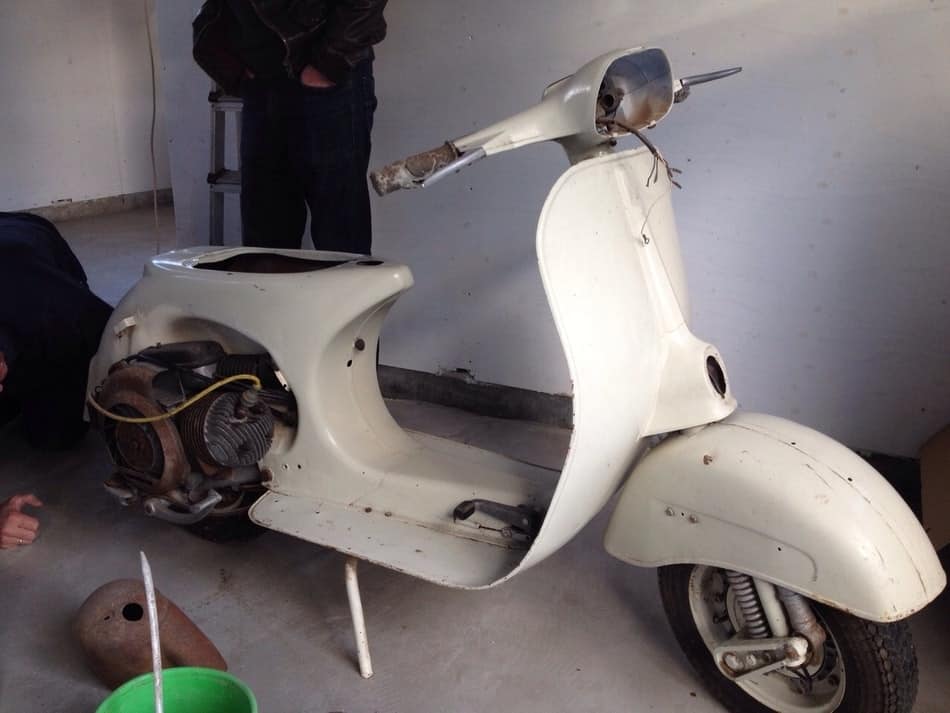
We were once approached by a man who had a classic Vespa in his garage for years. We bought it and sold it to someone else who restored it to its full glory. As you can imagine, if you can buy something for just a couple hundred dollars and restore it then you might have a profit of thousands of dollars.
Naturally not everybody who wants a Vespa has the knowledge and time to restore a used Vespa. At least we didn’t. So in the end, you will be paying more for something that is of good quality. But that’s fine as long as the Vespa is exactly what you expected.
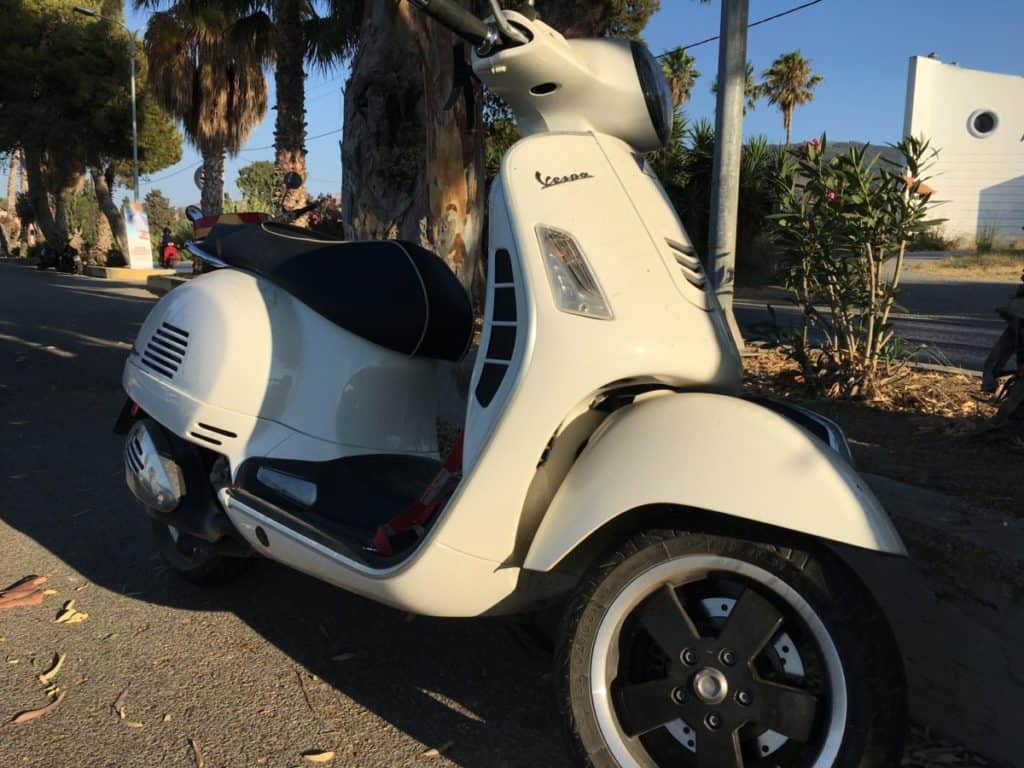
In general large frames, and classic Vespas are expensive. As for used modern Vespas, it depends on the model. Special edition Vespas or one that isn’t made anymore but is still very popular will show in the price.
Some years are also more popular than other years. For instance, the GTS 250 has better reviews than a GTS 300. That makes it popular and if you find one with low mileage it will be expensive. Additionally, the GTS Vespas that were launched from 2008 to 2012 had been recalled due to problems with fuel pumps and had to be replaced. Ask the owner if he/she has done this. These little details can save you a lot of trouble in the end.
5. Determine who is selling the used Vespa
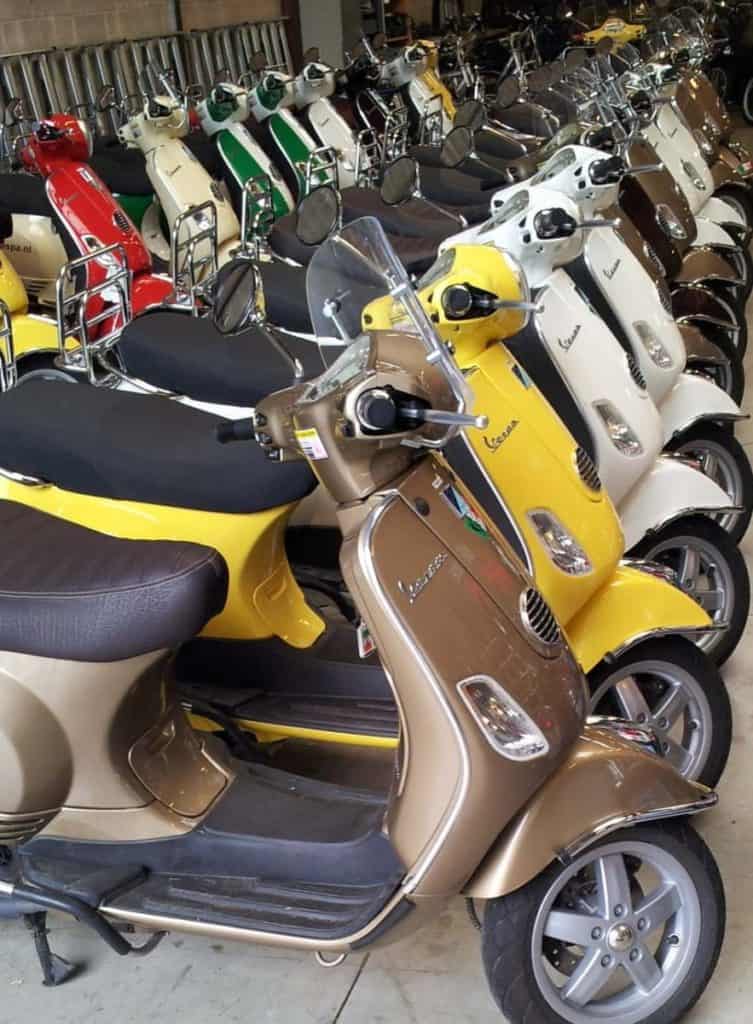
If you go online you can find all sorts of dealers that sell used Vespas. Check what else they sell and read the reviews left behind by previous customers. By reading the reviews you can determine if you can rely on them if something is wrong with your Vespa.
We bought a modern Vespa from a dealer. Unfortunately, we made the mistake that it was a car dealer who had a Vespa for sale. At that time we were still inexperienced in buying used Vespas and we had this idea that you can trust a story of a dealer more than that of a private owner.
In the end, this Vespa was the worst Vespa we had bought. It broke down a lot and once it was checked by a trustworthy maintenance guy, we learned that the Vespa might have been in a big accident, was poorly repaired and no authentic Piaggio engine parts were used.
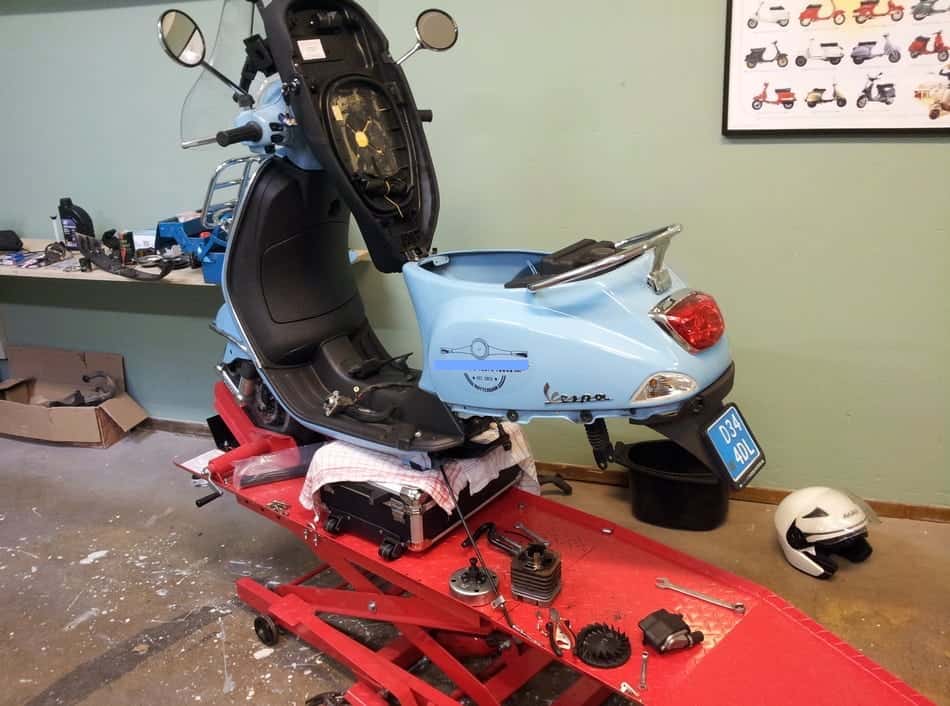
Online classified websites are the platform where private owners can sell their bikes. It is always tricky to know exactly who you are dealing with, but in this case, trust your instinct. Try to ask as much as possible about the Vespa before actually going there to have a look. We noticed that if you call then you can get a better impression. Always ask for additional detailed pictures of the Vespa which can be sent by mail.
More importantly, ask if the owner has all the necessary legal paperwork (ownership, etc) and the maintenance history of the Vespa. If you want to be safe, always go for a used Vespa that has all its maintenance history on paper and the invoices of the repairs. Some can not provide the latter since they do the maintenance themselves. This isn’t necessarily a bad thing. Meet up with this person and judge yourself if he/she was capable of doing the scheduled maintenance him/herself.
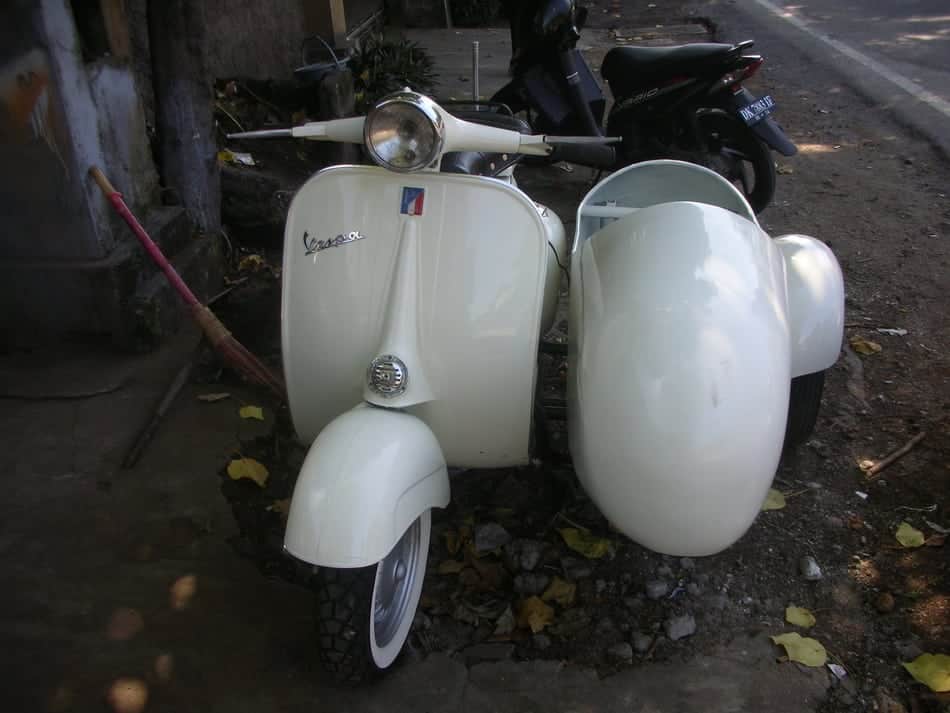
As for classic Vespas, don’t fall for companies that list beautifully restored Vespas on their website at attractive prices. Often these Vespas originate from Vietnam and have been poorly restored. If you are unlucky the restoration quality isn’t up to standard and you will be driving a very dangerous Vespa. We have listed points on how you can determine if you are dealing with a Vespa from Vietnam or another Asian country.
6. Determine the first impression of the used Vespa
By this point, you have done your research from home and you are now going to view one of the Vespas you have fallen in love with. Take you time to look at the Vespa to get a good idea of what you are dealing with. You can look for the following:
Is it dirty or clean?
If a Vespa is clean then you can see everything more properly. Scratches, dents, and rust are things you should look out for. It is ok if there is some damage, as long as it doesn’t affect the quality of the Vespa. Is the Vespa dirty? Walk away. Not only because you can’t see the damages well, but it shows how the owner has treated the Vespa.
What is the mileage?
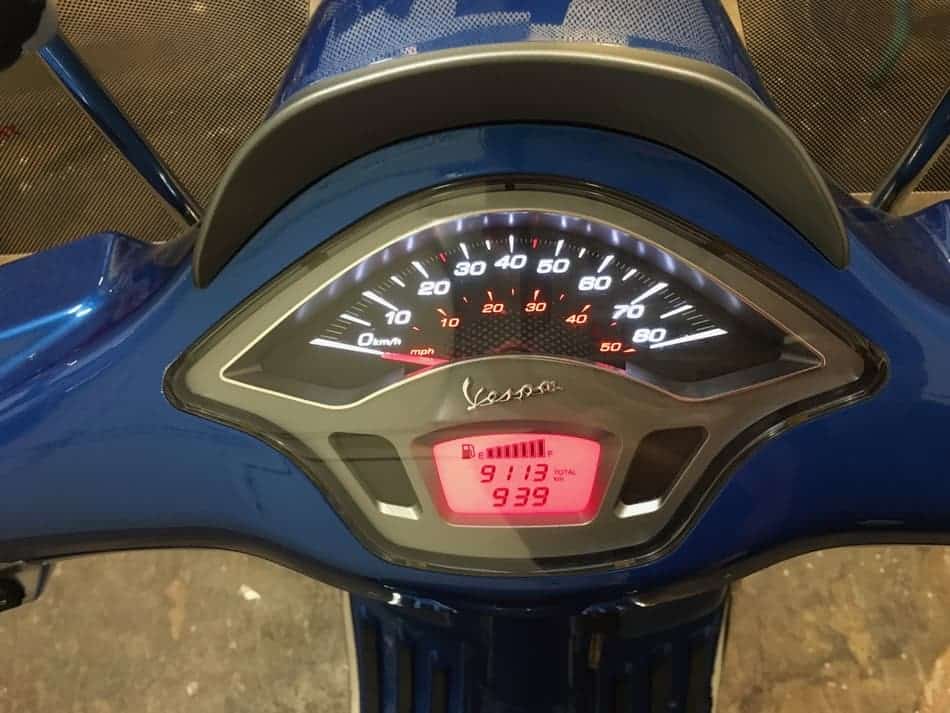
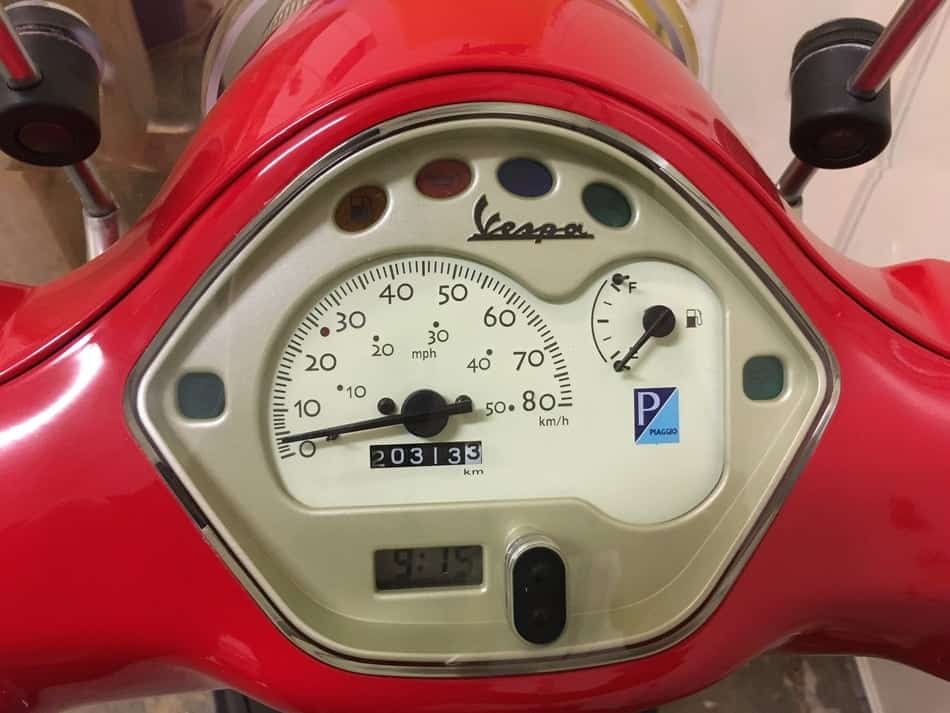
Like any used vehicle the mileage reflects the quality of the Vespa. A one-year-old Vespa with high mileage might be less attractive than a 3-year-old Vespa. But then again, a 3-year-old Vespa with very low mileage can be questionable as well. You should ask why it is low? Has it been in long-term storage? In these cases, you might want to wonder if they might have tampered with the mileage display.
Vespas with high mileage will have parts that are worn out and will be expensive to replace, especially if it is a 4-stroke engine. If the Vespa comes with a full maintenance history then it is fine since you can check if all parts have been replaced according to the maintenance schedule. For instance, for the GTS check if the rollers and belts have recently been replaced. These parts increase the performance of the Vespa.
Our Vespa LX from 2008 never had any problems and drove just as well as the new Vespa Primavera and Vespa Sprint. When we bought the Vespa LX it was 5 years old yet it didn’t have any engine modifications. The Vespa was well maintained, so in this case, we didn’t care too much about the mileage. On the other hand, it is a could point to discuss if you want to bargain.
Where are the damages and could they affect the Vespa and its engine?
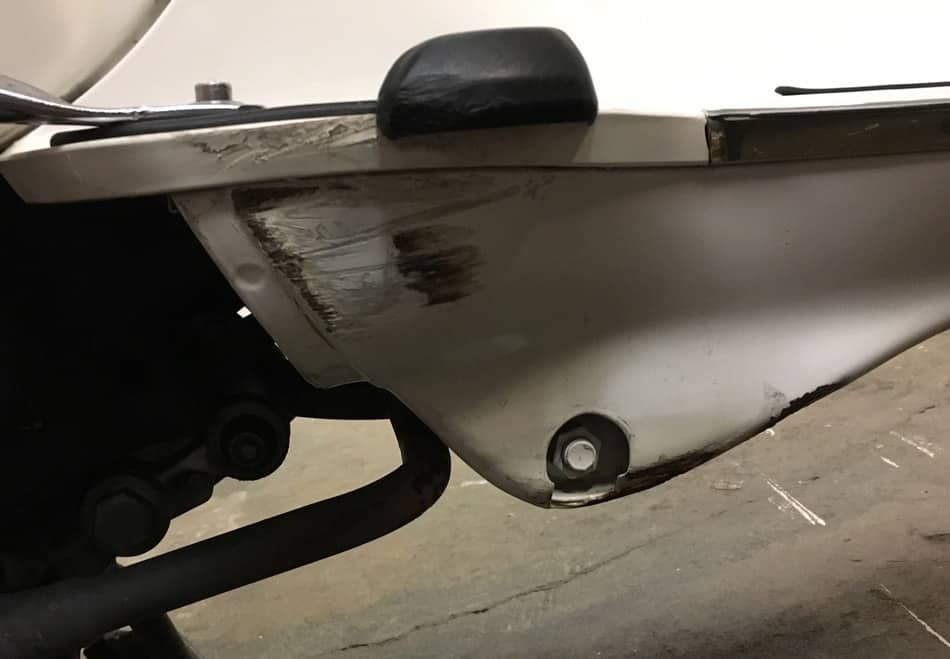
Once you have spotted the damages or dents on the Vespa body you need to decide if they will affect the quality of the scooter. Is the dent just in one area or does it continue and affect other areas of the Vespa? Dents at the cowl are usually ok but look out for dents on the sides and front end of the floorboard and along the sides of the front shield. This can be caused by an accident.
Then decide if the dents are tolerable for you. You don’t want to be annoyed every time you walk towards the Vespa and can’t stand the damages it has. Perhaps you know somebody who is good at dent repair or you have the experience yourself. Then it is even easier to buy a used Vespa with a bit of damage.
Have you found a Vespa you have fallen in love with but it has dents or scratches? We have written some tips on how to save money on dent repairs. This might help you to decide on buying the used Vespa or not.
Check the paint job to see if the damages to the Vespa have been repainted.
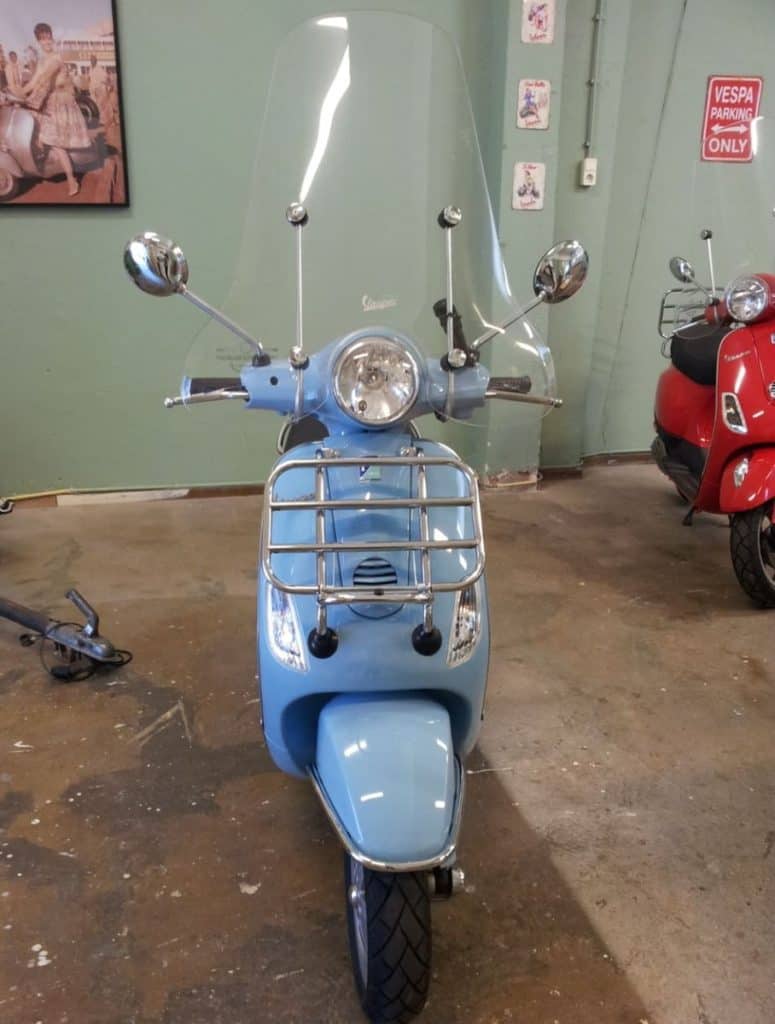
If the Vespa has been in an accident then the owner might have repainted it, making it look brand new again. A well-done paint job makes it easier to increase the price of a used Vespa even though it is quite old or has been in an accident. However, if a Vespa has been in a collision, then fixing parts such as the front fork, steering wheel, etc is more important than a slick paint job.
So always check the paint job or ask if the Vespa still has its original color. Check under the seat and take out the helmet compartment so check for the Vespa paint code and to double-check the state of the paint in these places. To learn more about the original Vespa paint, have a look at the following article.
We fell into this trap with our blue modern Vespa LX. The dealer said that the Vespa had low mileage and was like new. It looked new. But after a short while, it started getting a lot of problems. Someone pointed out that the Vespa might have been in a collision. If we had looked more closely at the paint job we could have seen some dried drips around the corners, also on the inside of the scooter. It would have saved us a lot of money if the seller had been honest. We could have walked away or negotiated for a much better price.
How are the tires?
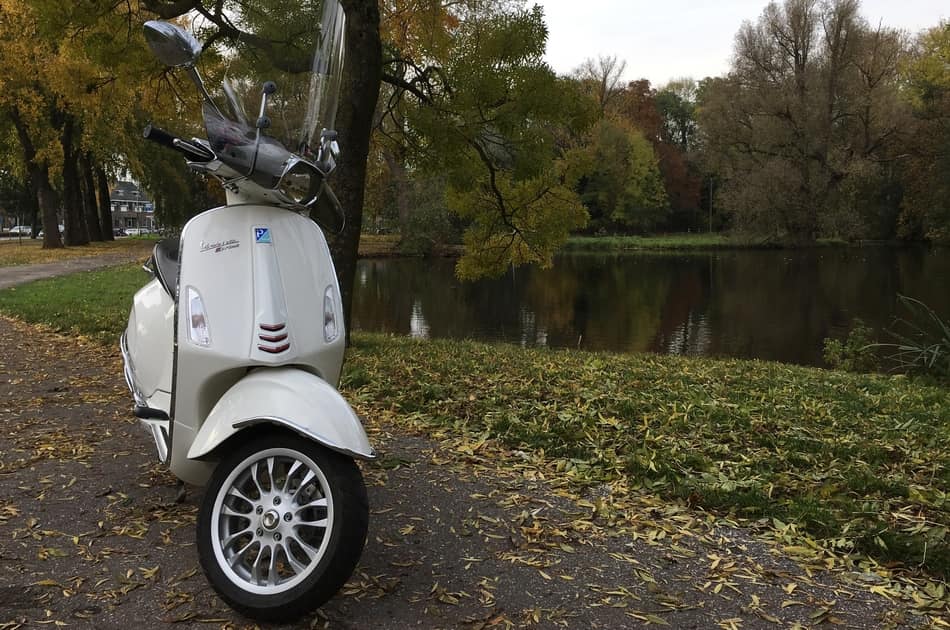
It is always possible to change the tires of a used Vespa. But do you want to pay for it? Changing tires, especially the rear tire can be expensive. If you need to change both tires it can cost you about 100USD extra. So make sure the price corresponds with additional maintenance costs.
How does it start?
Best to start a Vespa when the engine is still cold. Only then will you see if the engine is running properly. So try to ask ahead of time for the owner not to start the engine first. Warm engines usually have no problem starting, even if they have minor defects.
How do the throttle and the brakes feel?
Once seated on the Vespa you should play around with the throttle to feel if it returns back to its original position or if it will jam. By doing so you can check if the cables or the throttle are adjusted properly.
Also, play around with the breaks. Are they easy to squeeze? Does the Vespa stop immediately if you use the breaks?
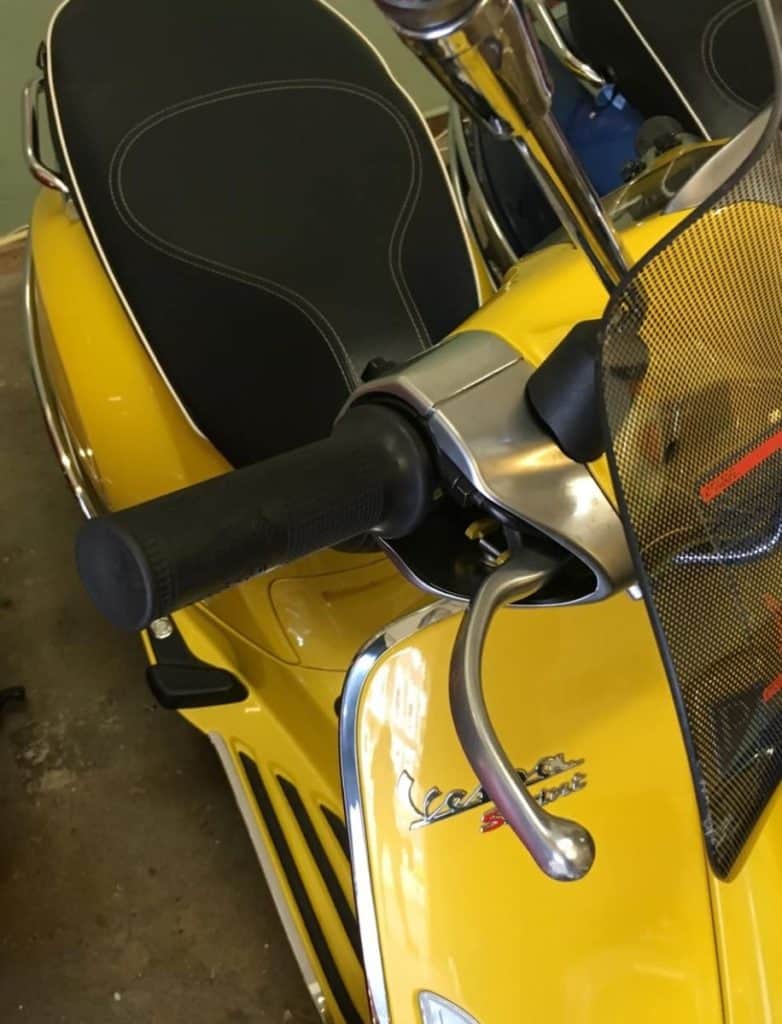
Do all the indicators work, just like the rear and front lights?
Turn the key of the Vespa to switch on the ignition in order to see if all the electronics work. It is important that the rear and front lights work just like the indicators. Make sure to check the dashboard too. Is the clock display working, just like the speedometer and mileage indicator?
It might sound obvious, but it wasn’t for us. We didn’t see that the mileage meter was broken. Only once we were home did we notice it. It immediately made us wonder how many miles the Vespa already had driven.
We had to bring the used Vespa to the repair shop to have it repaired. Unfortunately fixing the mileage indicator costs some time since the entire mileage/km cable needs to be changed. This same Vespa was a bad buy because the mechanic saw other parts that needed to be changed too such as the serpentine belt, tires, and brake lining. In the end, we had to pay around 450USD including labor costs.
Is there any rust in the corners and lines of the Vespa body?
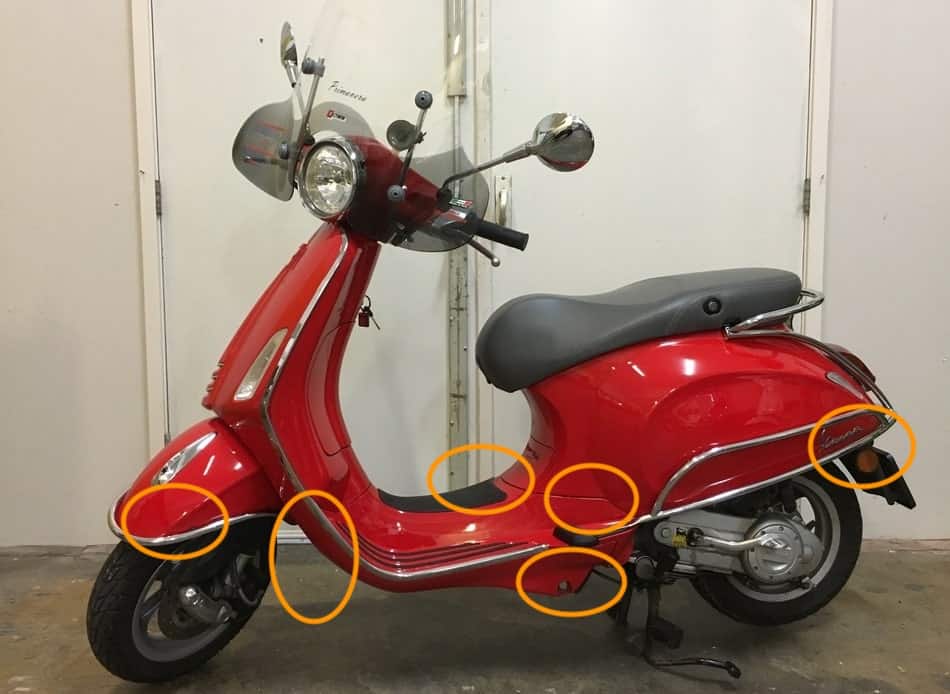
Take your time to check all the corners and curves of the Vespa. Since the Vespa body is made out of steel it is prone to rust. Especially at places where the paint has been chipped away. Usually, the rust starts under the floorboard and at the connection of the floorboard to the front leg shield and the cowl. Other places are behind the front mudguard and the rear end, above the number plate.
Also, make sure to look inside the Vespa by lifting the seat and removing the helmet bucket. Additionally, check the area around the battery as you can find rust there too. For the Vespa GTS, Primavera, and Sprint this is located under the floorboard (the area where you place your feet).
Most of this rust is caused by usage. Sometimes you can’t avoid it. But if there is rust in areas that seem strange, then you might want to reconsider buying. Not only because it is an unusual spot but it also shows how much maintenance the owner has done on the scooter. He or she should have had it fixed as soon as possible.
What does the engine look like?
Lift the seat of the Vespa and remove the helmet bucket to check the engine. Of course, you can’t see straight away if something is wrong with the carburetor, cylinder, or piston, but check if it looks well-kept. Run your fingers over plastic hoses to check for oil leakage. Make sure the rubber parts are not cracked.
“You have to look inside the Vespa to fully know what you are buying. “
It is important you take your time when checking the Vespa out. We noticed that we were always too enthusiastic and did not check the Vespa properly.
7. Ask questions to determine the conditions of the used Vespa
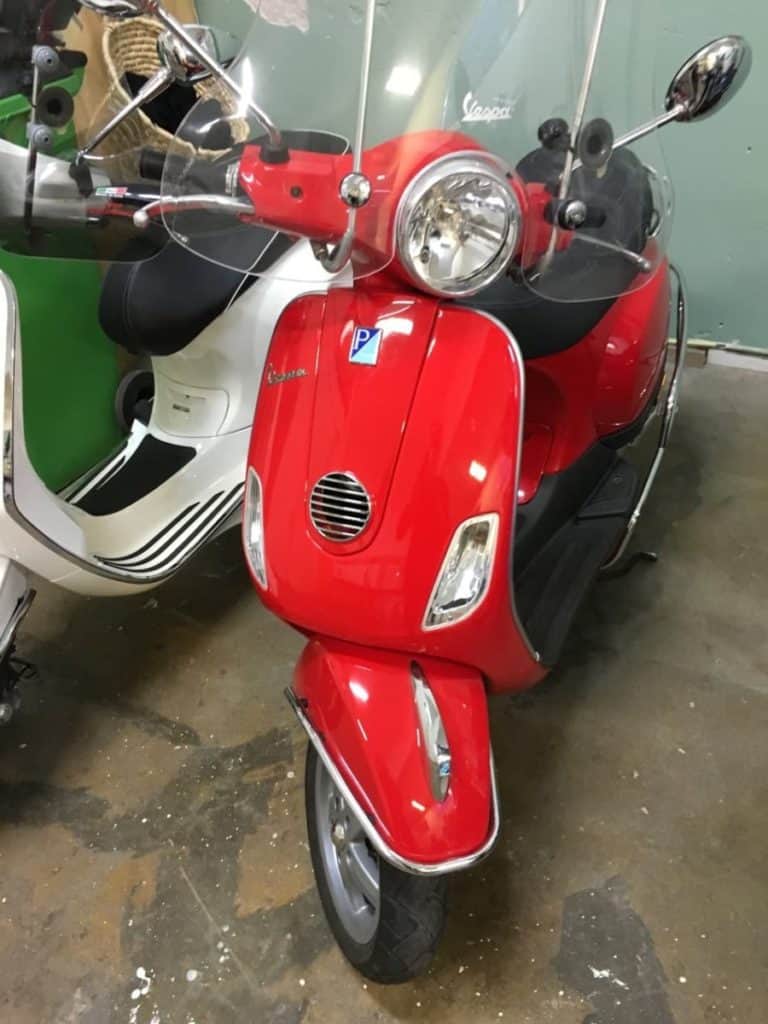
When you are checking the Vespa out all kinds of questions will come up. You will probably ask them while inspecting the Vespa. Just remember to ask the following:
What is the Vespa maintenance history?
Have a thorough look at Vespa’s maintenance booklet and invoices. The more information you have on paper the more trustworthy the sale will be. Many Vespa owners do the basic maintenance themselves. The downside of this is that you do not know what the maintenance history is of the Vespa.
The somewhat plus side is that somebody who has the know-how is more likely to take care of their Vespa better. Chances are he/she would have changed the oil and filter on time compared to somebody who doesn’t really understand the importance and provides minimal maintenance to avoid extra costs by bringing it to a workshop.
But to be on the safe side, always go for a Vespa which has a maintenance history on paper. If you take the time you can see if genuine parts were used during their repairs. If you don’t know the brand of these parts, you can look at the prices on the invoices.
How old is the Vespa and how many owners has it had?

The more you can find out about a Vespa the better picture you will have of what you will buy. Naturally, the ideal scenario is to buy a used Vespa from its first owner. But these Vespas can be quite expensive.
If the Vespa had two owners, then you can still get sufficient information and get a good price for it. If you are not knowledgeable about engines etc. then we suggest not buying a Vespa that has had 2 or more owners.
Have there been any accidents?
If a Vespa has been in an accident then it doesn’t necessarily mean it is a bad scooter. It can still be an excellent buy, as long it was repaired by a certified scooter workshop and maintenance schedules have been taken seriously. The one selling needs to be honest about how well it was repaired so you will be sure you will be driving safely on the Vespa.
Vespas that have been in a collision can have a broken or weak front bender, the metal might not be strong at certain places, etc. making it pretty dangerous to drive. Additionally, damages caused by an accident can influence the whole stability of the Vespa when driving.
I don’t see any reason why you should call off the buy if the owner has detailed information on what was damaged and which repairs were conducted.
Have there been any modifications to the Vespa engine?
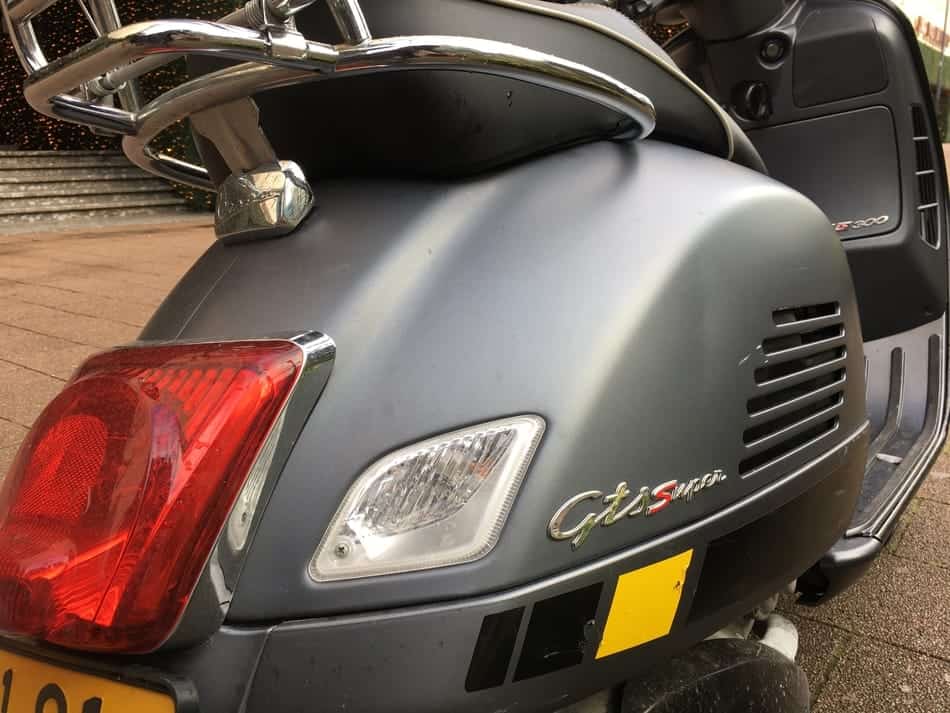
The best used Vespa you can buy is the one that is in its original condition. This means that nobody has modified the engine in any way. Modifications can lead to damage to the engine and other parts of the Vespa.
We bought two Vespas which had modified engines. They drove so much faster than legally allowed. The one selling said that you could easily decrease the speed by placing a new vario ring. That was the case, however, after some time one of the Vespas had trouble starting and broke down every now and then. To repair this we had to change the cylinder, the piston, and all other smaller parts that came along.
Additionally, a 50cc engine isn’t made to go faster than 30 mph/50km. So you can imagine that if you would modify it, it will affect other parts of the engine as well. In time, they will get damaged decreasing the life span of the engine and other parts.
Where has it been parked?
Everybody wants to have a used Vespa that looks brand new. Vespas that are parked indoors always look much better than the ones outdoors, especially in areas with lots of rain or with four seasons. So if this is important to you, ask ahead where the owner parked the Vespa.
What did the owner mainly use the Vespa for?
Those who use the Vespa for commuting or going from A to B usually see the scooter as a source of transportation. Therefore it might look more used compared to owners who had their Vespa to tour around.
You will notice differences in the mileage, the maintenance, the paint, and minor damages once you know the purpose of the Vespa. Check all the points mentioned above properly if the Vespa was used daily. If it all seems fine, then you should have a go for it.
8. Take a test drive on the used Vespa
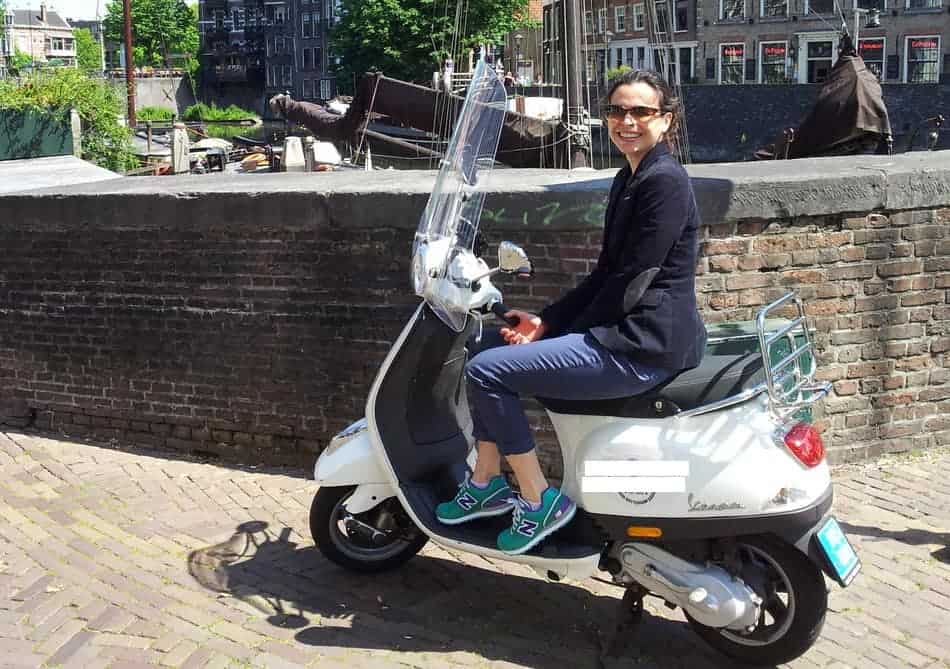
If you are buying a used Vespa then you must take a test drive. Try not to get distracted when starting the engine. The way the engine starts can tell you a lot about its condition. As mentioned earlier, the best way to check if the engine is fine is by starting it when it is still cold.
Once the engine is running, keep it idling for a couple of minutes before driving off. How does the engine sound when it is idling, or more important does the engine keep running?
Once you are driving, check the brakes, the indicators, speed and mileage indicators, and unusual sounds.
Take your time driving. Take a left and right turn, and go full speed on a straight road. Then brake and stand still for a while. Switch it off and then switch it on again. Do everything you can think of to make sure you have checked everything you need to know.
If the steering doesn’t feel smooth or you get the idea it is pulling more towards the left or right or the suspensions seem stiff, etc then you should ask the owner about these points once you get back. It could be a reason not to buy the Vespa.
9. Bargain on the used Vespa
Once you have decided you want to buy the Vespa, think if the price the owner is asking for is worth it. If the Vespa has some things that need to be repaired and you are still willing to buy it, then of course the price needs to be lower. This is a good time to bargain.
10. Take your time in deciding on buying a used Vespa

You need to do a lot of research if you want to buy a used Vespa properly. Additionally, there is a long list you need to check before actually purchasing it. It is important you take your time when going through the whole process of buying a used Vespa.
Make sure to take your doubts seriously. Don’t have them overruled by your enthusiasm. Think about going home and then make an appointment for a second visit. If the Vespa needs additional repairs, look up how much this will cost you.
Don’t feel rushed if the seller says that there are more potential buyers. You will never know if this is true or not. Listen to your gut feeling.
If available try to check 2 or 3 more Vespas so you can compare the experience. Take somebody along for an objective opinion, especially if you are the enthusiastic type. In this case, you will properly forget all the tips we mentioned and drive home with a Vespa. Don’t be ashamed of it, many have done this.

